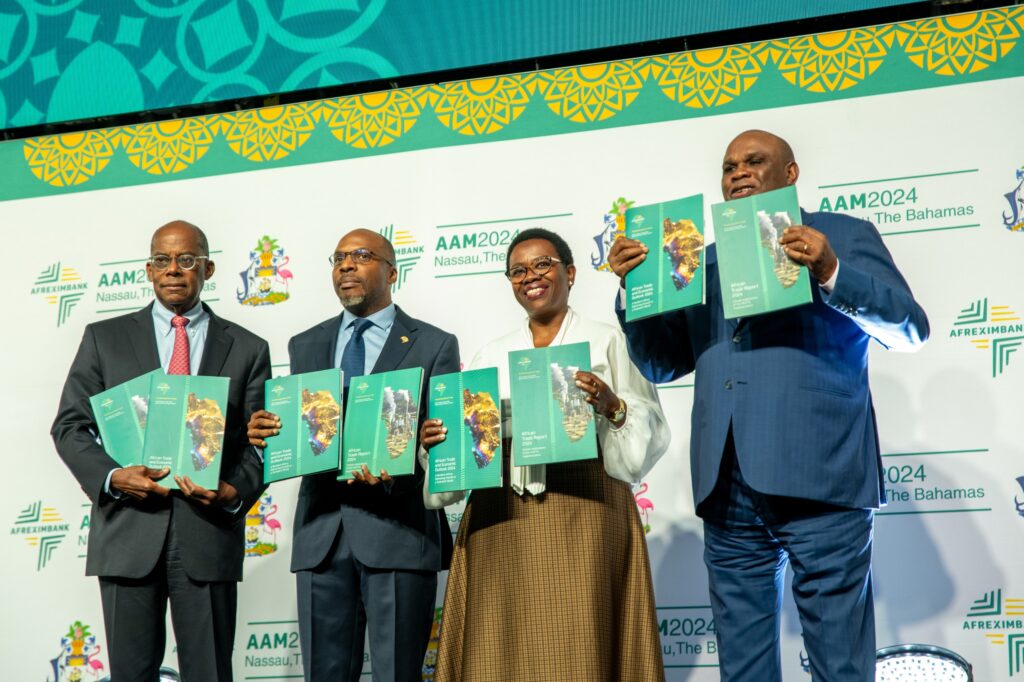However, this trade performance remains modest compared to regions like Asia and Europe.
Intra-African trade recorded an improvement in the past year but remained relatively low compared to other regions, according to Afreximbank’s African Trade Report 2024, titled “Climate Implications of the AfCFTA Implementation.”

The report, released on the sidelines of the 31st Annual General Meeting in Nassau, Bahamas, on June 13, indicates that intra-African trade accounted for approximately 15 percent of the continent’s total trade in 2023, up from 13.6 percent in 2022.
However, this trade performance remains modest compared to other regions. Intra-regional trade in Asia exceeds 55 percent of total trade, while in Europe, it surpasses 70 percent. South Africa, with its well-diversified economy, accounted for 20.4 percent of total intra-African trade during the same period, underpinning Southern Africa’s position as the highest regional contributor, representing 41.1 percent of total intra-African trade.
Professor Benedict Oramah, President and Chairman of the Board of Directors at Afreximbank, noted in his foreword that despite the constraining effects of climate disasters, COVID-19 aftershocks, the Ukraine crisis, and the Israel-Gaza conflict, which have elevated uncertainties in the Middle East and commodity markets, Africa’s regional trade remained resilient.
“Intra-African trade grew at 7.2 percent year-on-year, reaching US$192 billion, which accounted for 15 percent of total African trade in 2023, up from 13.6 percent a year ago,” Professor Oramah said.
He attributed this resilience to the continued implementation of the AfCFTA, supported by AfCFTA-enabling initiatives such as Afreximbank’s Intra-African Trade Fair (IATF), the Pan African Payments and Settlement System (PAPSS), and the Intra-Champ Initiative.
The Intra-Champ Initiative supports African businesses in executing projects and pursuing intra-African investments, as well as expanding investments in industrial infrastructure.
Professor Oramah highlighted that high commodity prices, particularly crude oil, positively impacted export receipts and balance-of-payments, reversing the downward trajectory of Africa’s reserves position. He noted that foreign exchange holdings on the continent recovered, expanding by an estimated 2.6 percent year-on-year to US$411.9 billion in 2023, compared to a contraction of 2.3 percent year-on-year to US$401.3 billion in 2022.
Despite the growth in intra-African trade, Professor Oramah emphasized that the continent’s trade dynamics reveal substantial untapped potential, particularly in products such as machinery, electricity, motor vehicles and parts, food products, minerals, beauty products, chemicals, plastic and rubber, ferrous metals, pearls and precious stones, and fertilizers.
Southern Africa emerged as the sub-region with the most substantial export potential, followed by Eastern Africa, Western Africa, Northern Africa, and Central Africa.
Africa’s economy expected to grow
Meanwhile, Afreximbank’s African Trade and Economic Outlook Report forecasts African economies to grow on average by 3.8 percent in 2024 slightly ahead of the predicted global growth of 3.2 percent—before increasing by 4 percent in 2025. The report, titled “A Resilient Africa: Delivering Growth in a Turbulent World,” provides an analysis of the economic environment, trade patterns, debt scenarios, and future projections for African economies.
Dr. Yemi Kale, Afreximbank’s Group Chief Economist and Managing Director of Research and International Cooperation, remarked that ongoing global challenges undermined the performance of Africa’s trade, which contracted by 6.3 percent in 2023 after expanding by 15.9 percent in 2022, while intra-African trade expanded by 3.2 percent over the same period.
“This performance is reflective of the resilience of the African economy and the potential impact of the AfCFTA’s single market for the continent as a tool to protect against global shocks,” Dr. Kale said. “Our analysis in the report also revealed large untapped potential in intra-African trade, especially concerning machinery, electricity, motor vehicles, and food products.”
The report also noted that African economies face several downside risks, including increasing levels of sovereign debt and associated sustainability risks, excessive exposure to adverse terms-of-trade shocks, escalating geopolitical tensions, volatile domestic political environments, high commodity prices, inflationary pressures, and potential food insecurity.
Nevertheless, the report notes that the outlook for the African continent in 2024 remains positive despite the challenging economic environment of 2023. Most macroeconomic indicators are expected to improve in 2024 and 2025.
The growth on the continent is also projected to be higher than the global average, and although inflation is currently high, it is expected to decrease, with this downward trend continuing into 2025.
